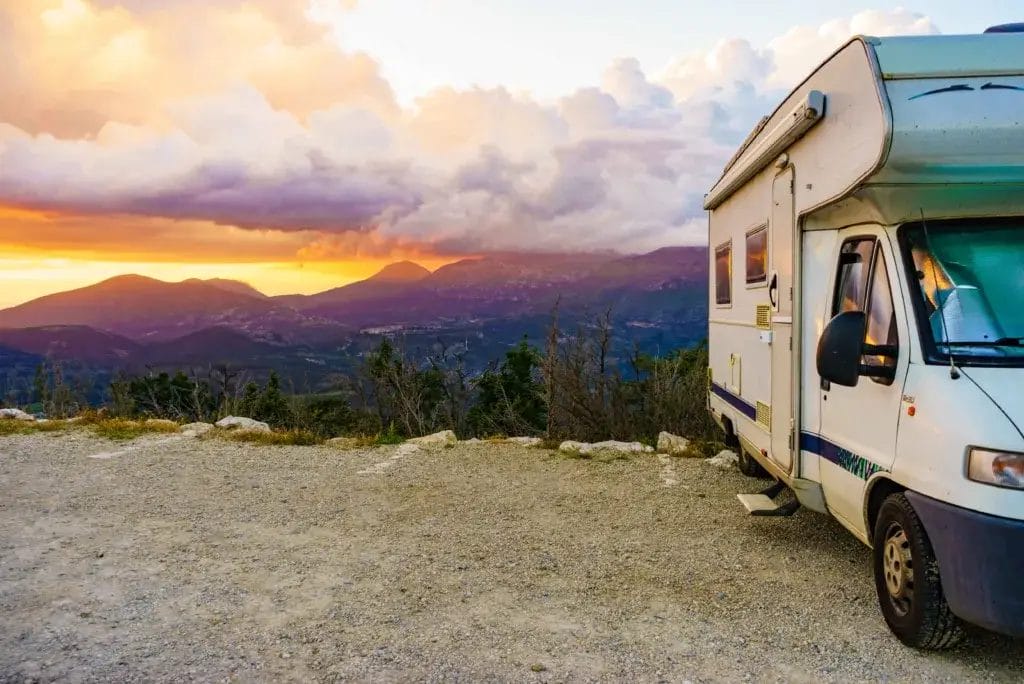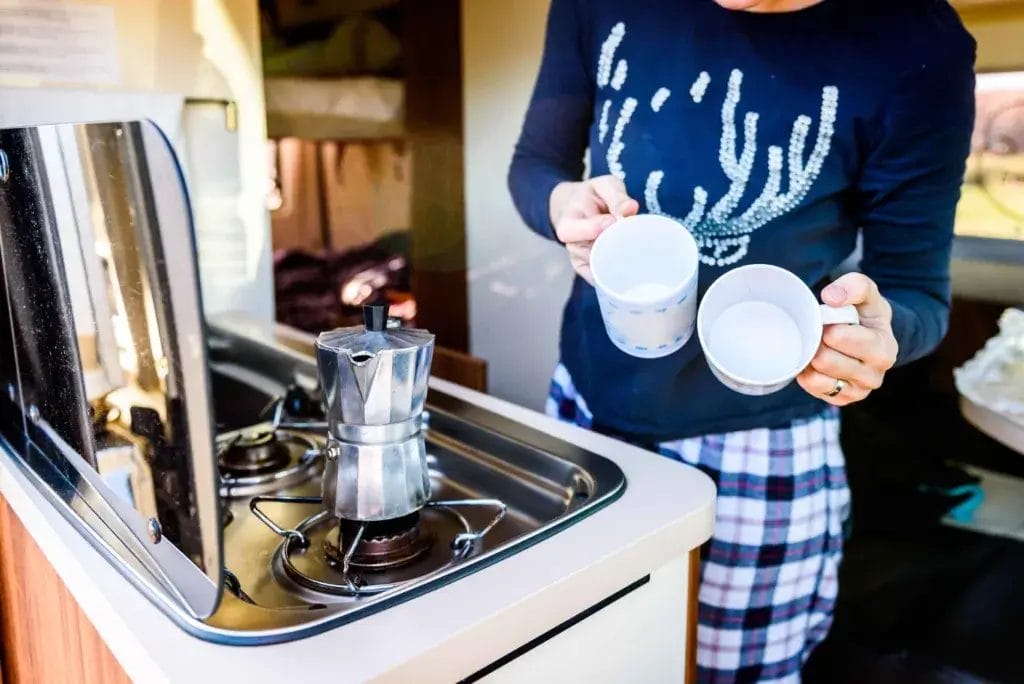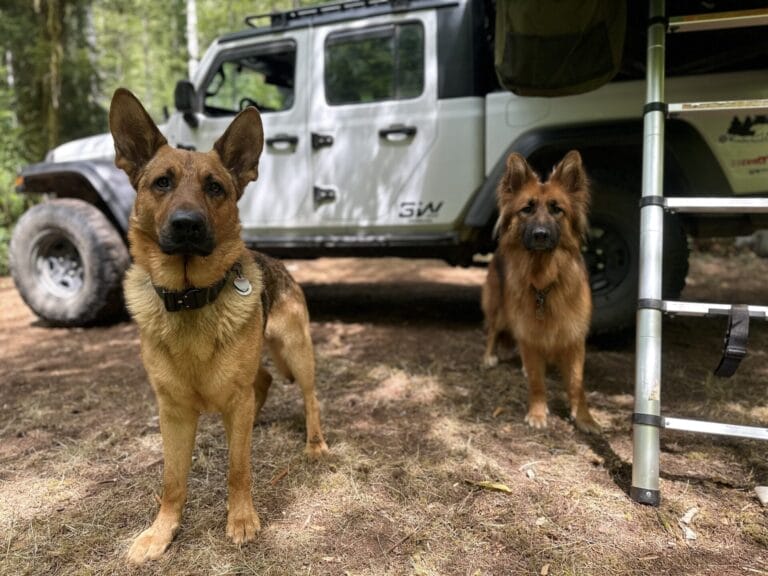How to Keep Mice Out of Your Camper: Simple Solutions for a Critter-Free Adventure
Ever found little furry visitors in your RV? It can turn your camping trip upside down in no time.
We’ve been there, chewed wires, droppings, and ruined snacks. It’s not exactly what you want on a getaway.
The best way to keep mice out of your camper is to combine sealing up entry points, keeping things clean, and using a few clever deterrents here and there.

Stopping mice before they move in is so much easier than kicking them out later.
Mice can slip through holes the size of a dime, especially when it gets chilly out and your camper looks like a cozy hotel. Parking on concrete or gravel instead of grass helps, but you’ll probably need to do a bit more to really keep them out.
Some folks swear by natural fixes like peppermint oil or mothballs, while others go for heavy-duty tactics like traps and sealing every nook.
We usually spend a weekend checking our rig and sealing up any holes bigger than a quarter inch. It’s made a huge difference for us.
Key Takeaways
- Seal up every entry point and try to park on concrete or gravel for your first line of defense.
- Keep your RV clean, lock up food in airtight containers, and try natural repellents like peppermint oil.
- Do regular inspections, especially before and after storage, to catch mouse problems early.
Understanding the Appeal of Your Camper to Mice
Let’s be real, our cozy campers attract more than just people. Mice love them too, and it’s not hard to see why.
Campers offer shelter, warmth, food, and a safe hideout from predators. When we park, especially in the cold, we’re rolling out the red carpet for them.
Inside, there are endless nooks and crannies. Behind cabinets, under appliances, inside the couch cushions, it’s a mouse’s dream neighborhood.
Mice are always on the hunt for nesting material. Paper towels, insulation, and those napkins you forgot about? Perfect bedding for a mouse family.
The kitchen is especially tempting. Even a crumb or an open bag of chips can turn into a midnight buffet.
They’ll chew right through packaging to get to your snacks. If you leave dry goods in the cabinets, mice will find them.
And don’t underestimate how small an opening they need. RVs have plenty of sneaky entry points, so blocking them is a must.
Preventative Measures
Stopping mice before they get in takes a bit of work, but it’s worth it. Don’t wait until you see signs; get ahead of the problem and save yourself a ton of hassle later.
Securing the Exterior
Mice can squeeze through holes you’d barely notice. We always start by checking the camper’s exterior from top to bottom. Mouse-proofing means sealing every crack and gap with expanding foam, especially under the RV.
Pay extra attention to where pipes and wires come in. We stuff steel wool around those spots because mice can’t chew through it.
Check your window and door screens for any rips. Even the tiniest tear is an open invitation.
I like to spray the underside and frame with a peppermint oil mix. It smells good to us, but mice can’t stand it..
Protecting the Interior
Once we’ve secured the exterior, we focus on making the interior less appealing to mice.
Remove all food sources before storing your camper, including those easily forgotten condiments and spices.
Store any food you must keep in airtight containers. We use metal or glass containers since determined mice can chew through plastic.
Kitchen and bathroom tips:
- Place dryer sheets in cabinets and drawers
- Check under sinks for gaps around pipes
- Keep bathroom items in sealed containers
We also place mothballs in perforated containers throughout the camper, especially in storage areas. The strong scent deters mice without damaging your interior.
Maintaining a Clean Perimeter
Don’t forget the outside! We always trim grass and weeds near the parking area. Tall grass is a mouse’s playground.
Keep firewood and junk away from your camper. If you’re storing your rig for winter, prop it up a bit off the ground—makes it harder for mice to climb in.
We like to use natural deterrents outside too:
- Sprinkle cayenne pepper around the tires
- Set cedar blocks near entry points
- If you can, plant peppermint around the area
It’s a bit of extra work, but it’s worth it when you open your camper and don’t find any furry surprises.
Natural Deterrents and Repellents

You don’t have to go full-on chemical warfare to keep mice away. Natural deterrents work great and are safer for you and your pets.
Peppermint Oil and Other Natural Scents
Peppermint oil is our go-to. Mice hate the smell, so we put cotton balls soaked in the oil in corners, cabinets, and anywhere mice might sneak in.
Here’s what works for us:
- Soak cotton balls and stash them in problem spots
- Swap them out every couple weeks
- Mix 10-15 drops in a spray bottle with water for hard-to-reach places
Other scents like clove oil, eucalyptus, and cedarwood help too. Some RVers swear by Irish Spring soap, just slice up a bar and scatter the pieces around.
Kate Naturals Rodent Repellent Spray offers a child and pet-safe solution to keep mice, rats, and other pests away from your home, car engines, and outdoor spaces. Formulated with natural peppermint oil concentrate and cinnamon, this non-toxic spray creates a scent barrier that rodents hate while being safe for your family. With up to 1,500 sprays per 16oz bottle, this USA-made repellent effectively protects your property without harmful chemicals.
DIY Rodent Deterrent Solutions
We love a good DIY fix. Dryer sheets are easy to tuck into drawers and cabinets, and mice seem to avoid them.
Here are a few things we’ve tried:
- Vinegar spray: Mix equal parts white vinegar and water, then spray around entry points
- Mothballs in Gatorade bottles with holes keep the smell contained but still effective
- Aluminum foil stuffed into gaps, mice hate the texture and sound
For a longer-term fix, use expandable foam in any open spots. Tons of RVers vouch for it.
Physical Barriers and Blockades

Physical barriers are your best friend when it comes to keeping mice out. They’re persistent little guys, but with the right materials, you can outsmart them.
Strategic Use of SS Wool and Copper Mesh
Stainless steel wool and copper mesh are our MVPs for sealing up gaps. Mice just can’t chew through them.
We stuff SS wool into small gaps around plumbing and wiring. For bigger holes, copper mesh is perfect, just cut it a bit bigger than the gap and wedge it in tight.
Don’t forget to check underneath your RV, especially where utilities come in. That’s prime mouse territory.
Give these barriers a once-over every few weeks. Vibration and travel can loosen them up, so a quick check keeps your defenses solid.
Window and Vent Screen Reinforcement
Windows and vents, let’s be honest, they’re practically a welcome mat for mice if you don’t secure them. We found out the hard way that standard RV screens just don’t cut it against determined rodents.
Swapping those out for metal mesh screens with smaller holes? Total game changer. It’s one of those upgrades that feels small but makes a big difference.
For vents, try installing specialized vent covers that let air flow but keep pests out.
You’ll find these covers at most RV shops, and they’re pretty easy to pop on. If you’re like me and love a simple fix, this one’s for you.
Some RVers I know swear by wrapping metal flashing around the base of their camper. It’s a smooth, slippery barrier that mice can’t climb.
About a foot high is usually enough; no need to turn your rig into Fort Knox. Just check for sharp edges, especially if you have pets or kids running around.
Keep an eye on your screens, too. Even a tiny tear can be an open door for a mouse on a mission.
Sound and Electronic Deterrents
Sound and electronic repellents? Honestly, these little gadgets have saved us so much hassle. They create a weird, uncomfortable environment for mice, but you won’t notice a thing.
Electronic pest repellers use ultrasonic waves that drive rodents nuts, but you won’t hear a peep. Plug them in, and let them work their magic.
For those of us who store our campers, there are battery-powered versions too. Just remember to swap out the batteries, I’ve forgotten before and paid the price.
Some favorites in our circle include:
- Under-hood ultrasonic devices that send out sound waves and flashing lights
- Wirelessly connected repellers for bigger campers
- Combo units that use both sound and light
We like to place these near doors, vents, or anywhere mice might sneak in. They’re made to be safe with your RV’s electronics, so you don’t have to stress about that.
In our camping group, plenty of folks swear by these devices. Pairing them with other methods seems to work best, think of it as your anti-mouse dream team.
Just a heads-up: even the best ultrasonic repeller needs the right spot and a little attention now and then. Consistency matters if you want to keep those mice moving along.
UNDER HOOD ANIMAL REPELLER effectively protects your vehicle and home with powerful ultrasound blasts and strobe lights that humanely deter rodents and pests. Battery-powered with a 45-day life, this device automatically turns off when your car is running and resumes when parked. Easy to install in cars, RVs, garages, and attics using included zip ties, it keeps mice, rats, rabbits, martens, and other destructive animals away without chemicals or traps.
Setting Traps and Baits Inside Your Camper
If mice have already moved in, trapping is your best bet. We’ve spent years figuring out the right trap and bait combos, it really makes a difference.
Choosing Effective Mouse Traps
Whenever we hit the road, I bring a mix of traps. Classic snap traps are cheap and effective, so I scatter them in a few spots. Plastic snap traps are easier to clean and reuse than the old wooden ones.
If you’re not into killing mice, no-kill traps are a solid option. They let you release the mouse far from your camper, at least 100 yards is a good rule of thumb.
Glue traps fit in tight corners, but I have mixed feelings about them. If you use them, check often so nothing suffers needlessly.
For ongoing protection, your options include:
- Snap traps (wood or plastic)
- Live-catch traps
- Electric traps (battery-powered)
- Glue boards (last resort)
Safe Placement and Baiting Techniques
Trap placement is everything. Put them along walls and in corners, mice love to hug the edges. The kitchen is a hotspot, so don’t skip it.
For bait, peanut butter is my go-to. You only need a little. Other good options:
- Dog kibble
- Chocolate bits
- Bacon
- Seeds or nuts
Wear gloves when you handle traps, mice get suspicious if they smell you. Set out several traps at once because, let’s be real, there’s rarely just one mouse.
Check your traps every day and get rid of any caught mice right away. Refresh bait every few days. When we check our camper during storage, we always reset any sprung traps before leaving.
Regular Inspection and Maintenance
Keeping mice out takes some ongoing effort, but it’s doable. We’ve found that a regular maintenance routine makes a world of difference.
Checking for Entry Points and Damage
Start with a close look at your camper’s outside. Mice can get through a hole as small as a dime – no kidding.
Focus on the underside where wires and pipes enter the frame. Those spots are sneaky entryways.
Don’t skip the hitch and slide-outs. Moving parts can create gaps over time, and mice are clever about finding them.
We’ve had mice chew through wires before – expensive and dangerous. Pay extra attention to where utility lines come in.
I use a flashlight to scan the undercarriage. Then I seal every gap with expanding foam. Check door and window seals for wear, too.
Schedule for Routine Cleaning
A clean camper is way less appealing to mice. Make a cleaning calendar, weekly wipe-downs, and monthly fridge and storage deep cleans.
After every trip, clean out your camper and get rid of crumbs. Even tiny leftovers can draw in rodents.
Some cleaning must-dos:
- Vacuum floors and upholstery
- Disinfect counters
- Clean out the fridge
- Remove all food before storage
We try to check on our stored RV every couple of weeks. It helps us catch any problems before mice make themselves at home or chew up wires and cushions.
When Mice Become a Problem

Finding mice in your camper can turn a relaxing trip into a headache fast. We’ve been there, and it’s never fun when your rolling home gets invaded.
Identifying Signs of Infestation
You might not see a mouse, but the signs are hard to miss. The most obvious? Droppings – tiny, dark pellets in drawers, cabinets, or along the floor.
You’ll also spot chewed materials – wires, cushions, even wood. I’ve seen seat cushions destroyed and wires gnawed down to the copper. It’s not pretty.
Noises at night, scratching or scurrying, are a dead giveaway. And if you find nesting material like shredded paper or insulation, you know they’re making themselves comfortable.
If you notice food with teeth marks or missing snacks, mice are likely snacking, too. Sometimes you’ll catch a musky smell that just won’t go away.
Steps to Take if Infestation Occurs
If you confirm mice have moved in, act fast. First, clean everything, wipe down surfaces and pull all food from cupboards. Sealed plastic containers are your new best friend.
Set traps where you’ve seen droppings or damage. Snap traps with peanut butter are my go-to, but catch-and-release traps work if you want to relocate them instead of killing them.
Once you clear out the mice, seal up entry points. Use steel wool, caulk, or expanding foam to close any gap bigger than a quarter inch. Mice are escape artists, so don’t skimp here.
Try natural deterrents like peppermint spray, dryer sheets, or Irish Spring soap in storage areas. We’ve had some luck with these, especially when stashing the camper for a while.
If mice keep coming back or things get out of hand, don’t hesitate to call in a pro who knows RVs. Sometimes you just need backup.
Seasonal Considerations

Keeping mice out of your camper is a year-round adventure. The seasons really change how and when rodents try to sneak in.
Prepping Your Camper for Off-Season
Winter storage is prime time for mice to move in. Before you stash your RV, give it a deep clean.
Take out all food items, even those sealed snacks you think are safe. Hungry critters will sniff out anything.
Next, seal up any potential entry points with expanding foam. You’d be amazed, mice can squeeze through holes the size of a dime!
Focus on spots where pipes, wires, or hoses poke through the walls. That’s where the sneaky ones get in.
We’ve scattered dryer sheets or essential oils all over the camper, and the strong scents really seem to bug the mice.
Don’t forget to pull out paper towels, toilet paper, and tissues. Rodents love turning that stuff into cozy nests.
For Interior & Exterior Pest Blocker effectively air-seals and insulates while providing EPA-registered protection against mice, birds, squirrels, ants, roaches, spiders, and bees. This dual-purpose foam is specially designed to seal gaps and cracks in your RV, garage and home, creating a protective barrier that keeps pests out while improving energy efficiency.
Staying Vigilant During Peak Rodent Seasons
Fall and early winter are when mice go house-hunting. We ramp up our prevention game when the leaves start to drop.
We do regular inspections, peeking into every nook. Setting traps around the outside of your stored RV can catch those first explorers.
Check traps weekly if you can swing it. Trust me, you don’t want surprises later.
We’ve tried using light deterrents during storage – battery-powered LEDs work. Mice hate well-lit spaces, so it’s worth a shot.
If you’re camping in chilly weather, be extra careful with food. We use airtight containers for everything and never leave dirty dishes out, not even for a night.
One seasonal trick we love: surround your camper with pine needles or mint plants. Mice don’t like crossing those, so it’s like a natural force field.
Accessorizing Your Camper for Prevention
The right gear can make a huge difference in keeping mice away. We’ve tested a bunch of options on our own RV trips, and some are surprisingly affordable and effective.
Rodent-Proof Accessories for Your Vehicle
When we’re prepping our Airstream or whatever RV we’ve got, we always grab protective gear. Expanding foam is our hero for sealing up those sneaky gaps. It’s wild how little space a mouse needs to squeeze through!
We’ve also come to love these simple but effective accessories:
- Steel wool pads: Stuff them into tiny openings – mice can’t chew through
- Ultrasonic repellers: Plug these in and they emit sounds mice hate (but we don’t hear a thing)
- Mesh screens: Cover your vents and other must-have openings
- Rubber door sweeps: Seal up the gaps under doors
Peppermint oil sprays around tires and entry points have worked wonders for us. The scent is fresh, and mice steer clear.
Investing in a Mouse-Free RV Model
When we shopped for our latest camper, we hunted for models with built-in rodent resistance. Newer RVs often have factory-sealed underbellies, which really cut down on entry points.
We always ask dealers a few key questions:
- Is the underbelly fully enclosed?
- Are wiring and plumbing access points sealed?
- What materials did they use that might keep rodents out?
Friends with newer Airstreams say the aluminum construction gives mice fewer ways in than some older builds. That investment in a well-sealed model has saved them lots of stress.
For tow vehicles, check for gaps where your vehicle connects to the camper. That spot can be a secret highway for mice if you’re not careful!
Frequently Asked Questions

Mice in campers – yeah, it’s a pain. We’ve gathered the top questions we hear from fellow RVers, plus some practical tips we’ve learned (sometimes the hard way).
What are some effective DIY strategies for preventing mice from entering my camper?
Sealing entry points is honestly the best DIY move. Inspect your camper for every tiny hole or gap and seal them up with spray foam or steel wool. Remember, mice can fit through a dime-sized opening!
Wire mesh on vents is another favorite of ours. You get airflow, but not unwanted guests.
After each trip, we do a serious clean-out. Crumbs and food bits are basically an invitation, so sweep them out.
Can you recommend the best mouse repellent to use in an RV?
Peppermint oil has been a winner for us. Cotton balls soaked in peppermint oil tucked into corners and cabinets make a big difference.
A lot of RVers swear by commercial sprays like Grandpa Gus mint spray. The strong mint scent keeps mice away, and you avoid harsh chemicals.
Just remember to refresh your repellents regularly. We swap ours every few weeks, especially during high-risk seasons.
Are there any tried-and-true methods for mouse-proofing campers during the winter months?
Winter is when mice get desperate, so we stay extra vigilant. We make it a point to check on our RV regularly during the cold months.
Before storing, we deep clean and pull out every last food item. If you have to leave supplies behind, store them in mouse-proof containers.
We set traps around the outside for an early warning system. Once a week, we check and reset them during winter storage.
Do dryer sheets really work to deter mice from making themselves at home in my camper?
Dryer sheets? They’re okay for a quick fix, but don’t expect miracles. The effect wears off fast.
We’ve noticed mice get used to the scent pretty quickly. Peppermint oil or mint sprays seem to last longer and work better.
If you want to use dryer sheets, pair them with other defenses. Don’t go all-in on just one method.
How can I stop mice from climbing up the tires into my pop-up camper?
We’ve had good luck putting metal barriers around our tires. Mice can chew through plastic or fabric, but metal slows them down.
Another trick: raise your camper with stabilizer jacks and pull away any steps or ramps when you’re not using it. That gap makes it harder for mice to get a foothold.
Some of our RV buddies swear by placing traps near the tires or making a ring of repellent around each one. It’s like building a little fortress – sometimes you need all the help you can get!
Is it true that keeping lights on underneath the RV can prevent rodent infestations?
From what we’ve seen, just leaving lights on under your RV doesn’t do much to stop mice. Sure, mice tend to shy away from bright spots at first, but if they’ve got a strong enough reason, like food or a cozy hideout, they’ll brave the light eventually.
If you want to up your game, try mixing lighting with other tactics. Motion-activated lights plus sonic repellents? That combo makes life a lot tougher for tiny intruders.
But here’s something to keep in mind: running lights all the time drains your batteries fast and can cause electrical headaches. Personally, I spend more energy sealing up every little gap and crack I can find. Repellents help too, especially the peppermint-oil kind—my grandma swore by them, and I have to admit, they smell way better than the alternative!











